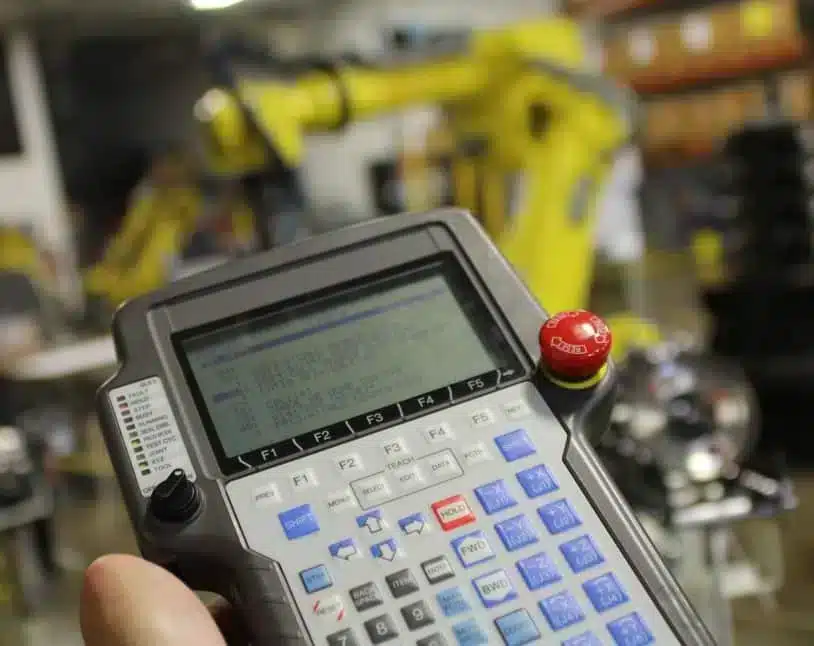Last edit: 26/05/2025

[ISO 10218-1: 2025] Every robot shall have:
- a normal stop function whereby the robot can be brought safely to a complete stop;
- a protective stop function; and
- an independent emergency stop function.
Each stop function shall have provision for the connection of external devices..
Usually, robots should have two stop functions:
1. Emergency Stop: if the robot receives an Emergency stop command, it stops immediately, with no possibility of restarting it as long as it receives the signal;
2. Protective Stop: the robot receives the signal from the interlocks (or a safety radar). If the robot is stopped in Protective Stop, the robot can still be moved by means of the relevant handheld hand control but under safe conditions (operator in a safe position or at limited speed and by means of maintained action commands).
In addition, any controller and/or handheld hand control with which the robot can be moved or cause a dangerous situation must be equipped with a manually operated emergency stop function that:
- Has priority over all other robot controls
- Causes all hazardous parts in the area to stop
- Removes power from the robot’s actuator drives
- Remains active until it is reset
In the new edition of the standard, the “Normal Stop” becomes a safety function.
The reason comes from the Machinery Regulation, where there is the following language.
[REGULATION (EU) 2023/1230] 1.2.4. Stopping
1.2.4.1. Normal stop. The machinery or related product shall be fitted with a control device whereby the machinery can be brought safely to a complete stop.
The key word is “safely”: since the Normal stop function has to bring the machine to a complete stop, “safety”, it must have well define reliability level. In other words, it becomes a Function with a certain PL or SIL level.
That is something unique in the list of Harmonised Standards, but we have to live with it!